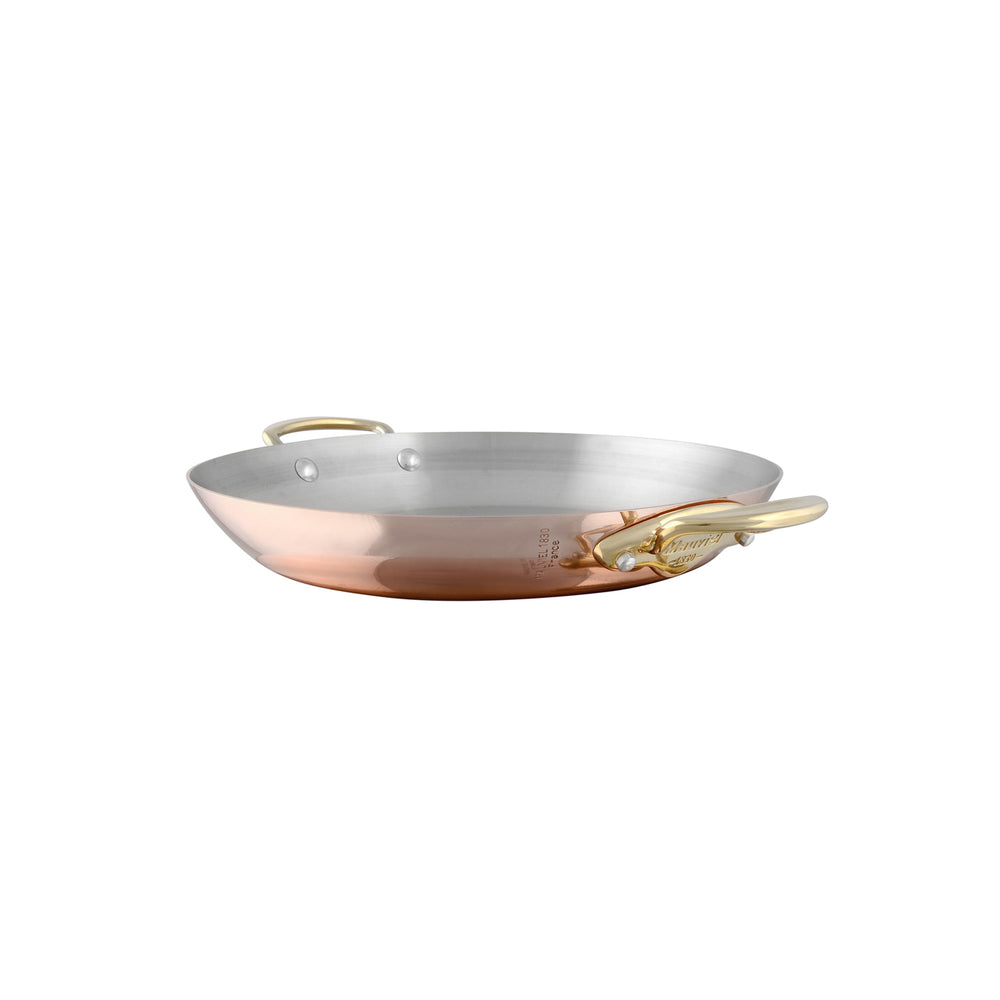Esther's Authentic Spanish Paella
Ingredients
200g fresh clams200g fresh mussels
10-12 threads saffron, wrapped in kitchen foil
1.4 litres fish stock
100g good-quality olive oil
150-200g raw whole prawns
1 white onion, chopped
1 clove garlic, peeled and finely chopped
400g cuttlefish or calamari, cleaned and chopped
1 tsp pimentón de la Vera or smoked paprika
3 medium, vine-ripened tomatoes, grated
400g Spanish bomba rice
Salt, to taste
Method
- Soak the clams in salted water so they release any impurities or sand, and discard any that have already opened. Keep them like this until time to use them, room temperature if you are making the paella right away or in the fridge up to 24 hours ahead of time.
- In a pot or saucepan, add 200ml water and bring to a boil. Place the mussels in a colander and wash with tap water to clean. Remove the beards with a paring knife and discard any broken or opened mussels. Add to boiling water and cook for 6 to 8 minutes, until the mussels have opened. Drain all but 100ml of the mussels cooking water and return it to the saucepan, which you will use in Step 4.
- Meanwhile, set a paella pan over medium heat (do not add oil). Place the saffron threads wrapped in foil on the pan and toast for 2 to 3 minutes. Remove the packet from the pan and carefully take out the toasted saffron. Add the saffron to a mortar and pestle and grind. Add 1 tbsp of the fish stock to the mortar and pestle and grind some more, turning it into a paste. Set aside.
- Place the rest of the fish stock to the saucepan with the mussel cooking water, and heat it on low-medium so it warms up as you cook the other ingredients.
- Heat olive oil in a paella pan over medium heat, until it glistens. Using tongs, add the prawns and cook for 2 minutes, until they change colour. Remove them from the pan and set aside.
- In the same oil, make your sofrito: Over medium heat, add the garlic and onion – along with a few pinches of salt – until browned and caramelised, 8-10 minutes. Carefully move the onion mix to the sides of the paella pan to leave some space in the middle for cooking the cuttlefish or calamari. Increase the heat, add the cuttlefish or calamari, and cook for about 5 minutes, until firm. Bring the onion mix back to the middle, mixing with the cuttlefish or calamari. Add the pimentón de la Vera or smoked paprika and cook for 10 seconds; be quick or the chilli might burn. Add the grated tomato and cook until reduced and caramelised, about 5 minutes.
- Add the rice to the pan and stir well with all the other ingredients. Now add the hot fish-mussel stock to the paella pan, along with the toasted saffron paste. Drain the soaked clams and add it to the pan. Mix and cook for 10 minutes on high heat. Taste the rice and add more salt if needed. Cook for another 8 minutes on low heat. The clams should be opened by now. Taste again and adjust seasoning. Add the cooked prawns and mussels back to the pan and cook for another 2 to 3 minutes. Take the pan off the heat, cover with foil or a lid, and let the paella rest for 2 minutes before serving.
BK Tips
- Ask your fishmonger to clean and chop the cuttlefish or calamari for you – it will make your life much easier. Alternatively, learn how to do it yourself at the Whole Fish & Seafood Class at our cook school.
- To make vegetable paella, add the vegetables when you make the sofrito (as in Step 6 above), before adding the grated tomatoes. To make paella with chicken or chorizo, cook the ingredients before the sofrito (as in Step 5 above when you cook the prawns), and add back to the pan at the end until warmed through, before resting. You can use vegetable or chicken stock in place of fish stock.



















